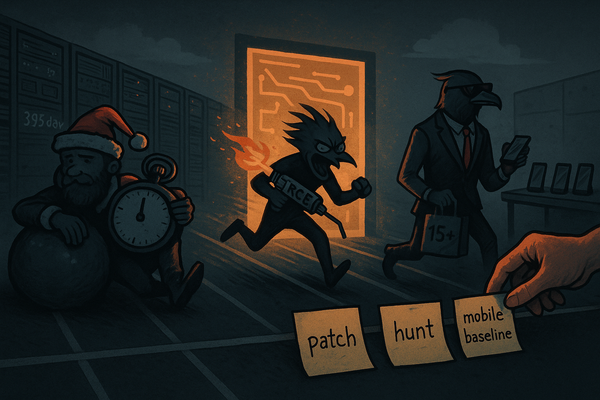Top 5 Most Impactful Cybersecurity Incidents in the US for 2024: Long-Term Economic Impact Analysis
This report identifies the top 5 most impactful incidents: the LoanDepot ransomware attack, the Snowflake data breach, the CDK Global ransomware attack, the Change Healthcare ransomware attack, and the Volt Typhoon infiltration of US critical infrastructure.

TL;DR
-
LoanDepot Ransomware Attack: Disrupted mortgage payments and exposed sensitive customer information. Financial impact: $26.9 million in recovery costs, legal fees, and customer notifications. Long-term repercussions: potential regulatory fines and loss of customer trust.
-
Snowflake Data Breach: Compromised customer data from 165 organizations, leading to ransom demands. Economic impact: hundreds of millions due to data loss, legal costs, and reputational damage.
-
CDK Global Ransomware Attack: Affected 15,000 car dealerships, resulting in over $1 billion in losses. Highlights the need for robust cybersecurity measures in the automotive sector.
-
Change Healthcare Ransomware Attack: Delayed healthcare services and exposed 100 million individual records. Long-term impact: ongoing regulatory investigations and potential fines.
-
Volt Typhoon Infiltration: Targeted US critical infrastructure sectors, posing significant risks to national security. Highlights the need for enhanced threat detection capabilities and collaboration with government agencies.
Research Summary
In 2024, the US experienced several high-profile cybersecurity incidents that had significant long-term economic impacts. These incidents spanned various sectors, including healthcare, finance, technology, and public infrastructure, resulting in substantial financial losses, operational disruptions, and reputational damage. This report identifies the top 5 most impactful incidents: the LoanDepot ransomware attack, the Snowflake data breach, the CDK Global ransomware attack, the Change Healthcare ransomware attack, and the Volt Typhoon infiltration of US critical infrastructure. By examining these breaches, organizations can better understand the evolving threat landscape and prepare to mitigate future risks.
LoanDepot Ransomware Attack
In January 2024, LoanDepot, a major US mortgage lender, suffered a ransomware attack that disrupted mortgage payments and exposed sensitive personal information of 16.6 million customers. The financial impact included $26.9 million in recovery costs, legal fees, and customer notifications. Long-term repercussions include potential regulatory fines and loss of customer trust, highlighting the need for robust incident response plans and enhanced data encryption.
Snowflake Data Breach
In June 2024, a significant data breach at Snowflake, a multi-cloud data warehousing platform, compromised customer data from 165 organizations, including high-profile clients like Ticketmaster and Santander. The breach, caused by stolen credentials, led to extensive data exposure and ransom demands. The economic impact is estimated in the hundreds of millions due to data loss, legal costs, and reputational damage. This incident underscores the importance of strengthening identity and access management and enforcing multi-factor authentication.
CDK Global Ransomware Attack
In June 2024, CDK Global, a software provider for the automotive industry, was hit by a ransomware attack attributed to the BlackSuit ransomware gang. The attack disrupted operations for over 15,000 car dealerships across North America, leading to substantial financial losses. CDK Global reportedly paid a $25 million ransom to expedite system restoration, with the overall financial impact on the automotive industry exceeding $1 billion due to operational disruptions and lost revenue. This incident highlights the critical need for comprehensive incident response plans and enhanced ransomware defenses in the automotive sector.
Change Healthcare Ransomware Attack
In February 2024, Change Healthcare, a US healthcare payment provider, experienced a ransomware attack that delayed prescriptions and healthcare services nationwide. The attack, carried out by the ALPHV/BlackCat gang, led to a $22 million ransom payment and the exposure of 100 million individual healthcare records. The long-term impact includes ongoing regulatory investigations and potential fines, emphasizing the importance of multi-factor authentication and regular security training.
Volt Typhoon Infiltration
In January 2024, the US Department of Justice announced the disruption of a cyber espionage campaign by the Chinese state-sponsored group Volt Typhoon. The campaign targeted critical infrastructure sectors, including communications, energy, and transportation. The infiltration posed significant risks to national security and highlighted the strategic vulnerabilities in US critical infrastructure. This incident underscores the need for enhanced threat detection capabilities and collaboration with government agencies for threat intelligence.
Breaches and Case Studies
-
(2024-01-08) LoanDepot Ransomware Attack
- Description: Ransomware attack disrupted mortgage payments and exposed sensitive customer information.
- Actionable Takeaways: Implement robust incident response plans, enhance data encryption, and conduct regular security audits.
- References:
- (2024-12-02) - Top 10 Cyber-Attacks of 2024
-
(2024-06-01) Snowflake Data Breach
- Description: Data breach compromised customer data from 165 organizations, leading to ransom demands.
- Actionable Takeaways: Strengthen identity and access management, enforce multi-factor authentication, and monitor for credential theft.
- References:
- (2024-10-28) - Biggest Cyber Attacks Of The Year So Far.. 2024 Part 2
-
(2024-06-18) CDK Global Ransomware Attack
- Description: Ransomware attack affected 15,000 car dealerships, resulting in over $1 billion in losses. CDK Global paid a $25 million ransom to restore operations.
- Actionable Takeaways: Develop comprehensive incident response plans, prioritize data protection, and enhance ransomware defenses.
- References:
- (2024-10-28) - Biggest Cyber Attacks Of The Year So Far.. 2024 Part 2
-
(2024-02-01) Change Healthcare Ransomware Attack
- Description: Ransomware attack delayed healthcare services and exposed 100 million individual records.
- Actionable Takeaways: Implement multi-factor authentication, conduct regular security training, and ensure compliance with data protection regulations.
- References:
- (2024-12-02) - Top 10 Cyber-Attacks of 2024
-
(2024-01-31) Volt Typhoon Infiltration
- Description: Chinese state-sponsored group infiltrated US critical infrastructure sectors.
- Actionable Takeaways: Enhance threat detection capabilities, conduct regular security assessments, and collaborate with government agencies for threat intelligence.
- References:
- (2024-12-02) - Top 10 Cyber-Attacks of 2024
Recommendations, Actions, Suggested Pivots, Forecasts and Next Steps..
(Subscribers Only)





